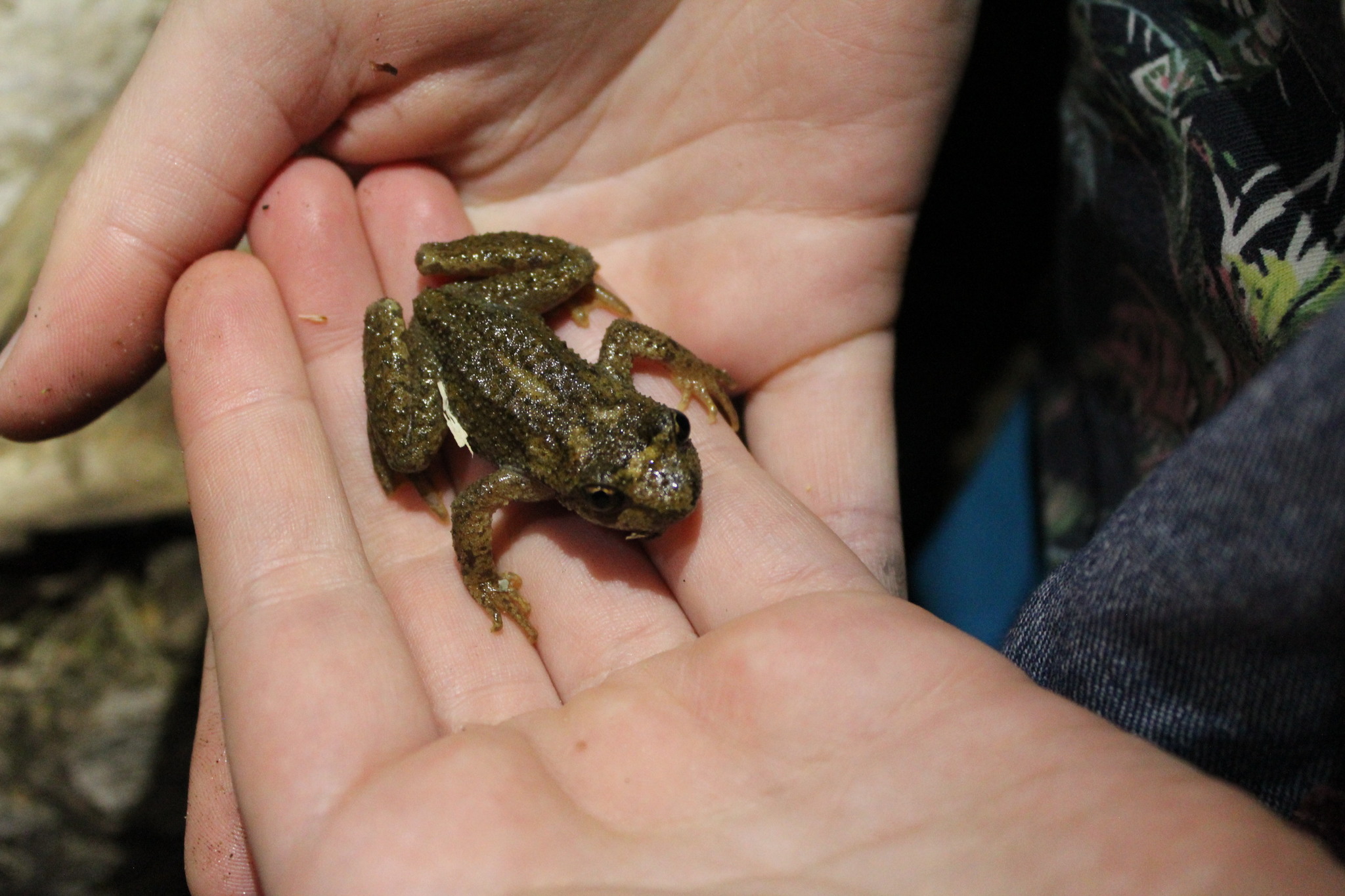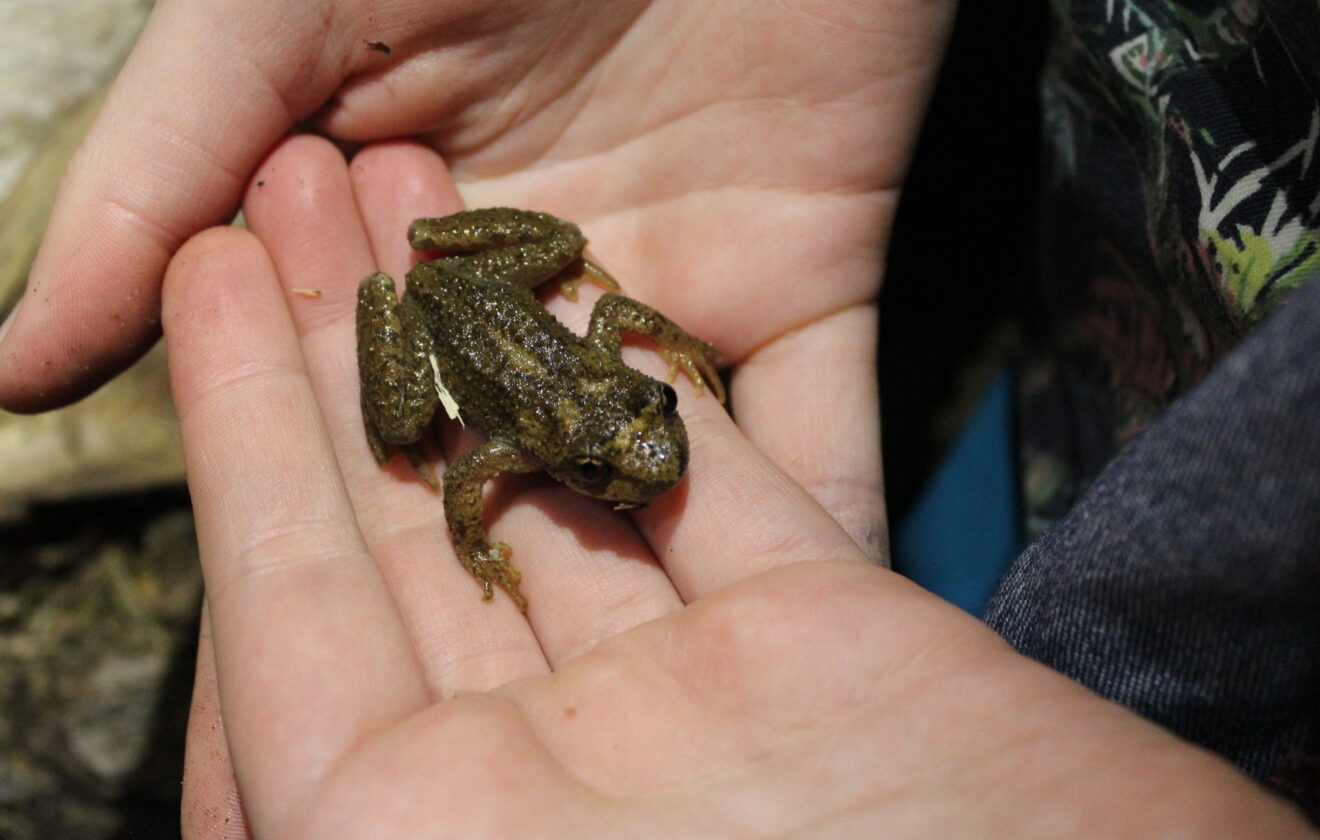Secrets of the Stream: Discovering the Rocky Mountain Tailed Frog (Ascaphus montanus)#
Nestled within cool mountain streams beneath the captivating backdrop of North America’s rugged Pacific Northwest, a remarkable amphibian creeps softly over moss-covered rocks. Its presence often remains unnoticed by even the most attentive explorers, yet its story is interwoven intricately with the health and vitality of the mountain ecosystems it inhabits. This elusive, fascinating character is the Rocky Mountain Tailed Frog, scientifically named Ascaphus montanus.
With a name as intriguing as its biology, the Rocky Mountain Tailed Frog captivates scientists and nature lovers alike. Contrary to its name, the “tail” is not really a tail; rather, it is an extraordinary adaptation intimately tied to its fascinating reproductive strategy. Presenting a window into evolutionary processes and ecological dynamics, Ascaphus montanus serves as a captivating introduction to the hidden intricacies of amphibian diversity.
Taxonomy and Classification#
Ascaphus montanus belongs to the family Ascaphidae, a small lineage distinctly separate from many typical frog families. Its genus, Ascaphus, harbors just two closely related species, the Rocky Mountain Tailed Frog (A. montanus) and its cousin living farther west, the Coastal Tailed Frog (A. truei). These ancient amphibians offer scientists valuable glimpses into the past due to their divergent evolutionary paths dating back millions of years.
Both species in the genus Ascaphus share a unique set of biological traits, having retained many primitive characteristics lost in other evolutionary branches long ago. Such uniqueness sets the Rocky Mountain Tailed Frog apart, underscoring its exceptional importance to zoologists seeking a deeper understanding of amphibian evolution.
Natural Habitat#
The Rocky Mountain Tailed Frog is exclusive to North America, with a range focused specifically within the rugged inland mountain regions stretching from southeastern British Columbia in Canada, southward through northern Idaho, western Montana, and parts of northeastern Oregon and eastern Washington in the United States.
Within this range, the frog finds sanctuary among fast-flowing, clear mountain streams typically shaded by dense canopies of coniferous and mixed forests. It prefers habitats characterized by cascades, turbulent water flow, and stable streambeds lined with coarse, rocky substrates. These cold, crystal-clear waters not only provide it refuge from predators but serve as critical breeding grounds—which explains its meticulous habitat selection.
A keen observer venturing into these dense forests might come upon shaded forest streams, gently sweeping over smooth stones and protruding logs. Here, tucked invisibly among the lush ferns, moss-covered logs, and moist, leaf-littered banks, the tailed frog quietly flourishes—an ideal environment for the amphibiologist patient enough to discern its cryptic presence.
Physical Characteristics#
Visually inconspicuous yet subtly charming, the Rocky Mountain Tailed Frog is diminutive, usually no more than 4 to 5 centimeters in body length. Its skin, textured and granular, is a mosaic of mottled browns, grays, and greens—perfect camouflage ensuring seamless blending with wet rock surfaces and mossy streamside vegetation.
Though modest in stature, one particularly remarkable physical adaptation distinguishes the male Rocky Mountain Tailed Frog: a distinctive “tail”—a cloaca modified as a copulatory organ used to internally fertilize females. This anatomical structure, unseen in nearly all other frogs, is an adaptation perfectly suited to their turbulent aquatic environment where external fertilization, common among amphibians, is challenging and inefficient.
Other notable adaptations include a flattened physique, powerful limbs, and webbed legs, all valuable for maintaining control and position against the brisk current. Such structural features allow it to cling stubbornly to underwater stones, moving precisely and carefully through its rapidly flowing aquatic home.
Behavior and Life Cycle#
Feeding Behavior#
This fascinating amphibian emerges primarily under the cover of night, operating as a nocturnal predator. Using acute senses and visual acuity finely tuned to the darkness, the tailed frog consumes a diet composed largely of aquatic insects, terrestrial arthropods drifting accidentally into its watery world, and occasionally other small stream-dwelling invertebrates. Its stealth and patience reward it with a diverse bounty—a testament to adaptability honed by millions of years of evolutionary trial.
Reproductive Life Cycle#
Perhaps the most intriguing aspect of Ascaphus montanus biology is its unique reproductive approach. Unlike the vociferous chorus common among other species, these frogs are silent courtship practitioners. They engage in internal fertilization, a rarity among frogs, through copulation facilitated by the aforementioned modified “tail.”
Following fertilization, females dab a small cluster of eggs—usually a dozen at most—beneath carefully selected submerged stones in rapid streams. The eggs remain firmly attached, protected from predators and the unrelenting push of water. Tailed frog tadpoles, upon emerging from the eggs, immediately face their harsh environment, their specialized sucker-like mouths securely attaching them to stones amidst rapid currents. Remarkably, their tadpole stage is among the longest of all frogs—often stretching up to 3–4 years, a stunning adaptation directly linked to the cold, nutrient-poor waters.
Ecological Role#
As an essential participant within its mountain-stream ecosystem, the Rocky Mountain Tailed Frog serves several crucial roles. It occupies a dual ecological niche—both predator and prey. By consuming aquatic insects and terrestrial invertebrates, it directly influences insect population dynamics and plays a subtle, yet profound, regulatory role in these fragile ecosystems.
In turn, it provides sustenance for predators like snakes, small mammals, and birds, thus establishing an equilibrium within the food web. Beyond these trophic interactions, Ascaphus montanus acts as a sensitive indicator species, providing early warnings when habitat health deteriorates due to pollution, elevated temperatures, or habitat degradation.
Threats and Conservation Status#
Despite its ecological importance and fascinating adaptations, the Rocky Mountain Tailed Frog faces significant conservation threats and is currently classified as “Near Threatened” by the International Union for Conservation of Nature (IUCN). Habitat disruption, particularly logging and associated soil erosion, contributes to increased sedimentation, altering stream environments and negatively impacting tadpole development.
Climate change exacerbates these pressures, raising water temperatures and altering snow runoff patterns. Because tailed frogs rely extensively on cold-water habitats, warming temperatures threaten their long-term survival, prompting urgent conservation measures and comprehensive management strategies.
Thankfully, conservationists have been proactive in implementing protective regulations within key habitats, alongside fostering awareness-raising campaigns directed toward public education on amphibian conservation. Preserving old-growth forests, minimizing logging impacts near streams, and ensuring clean waterways have become critical priorities in safeguarding the future of this remarkable amphibian.
Cultural and Scientific Significance#
While cultural traditions specific to Ascaphus montanus remain limited due to its cryptic nature, its place in scientific discovery is prominent. Biologists recognize the Rocky Mountain Tailed Frog as a “living fossil,” granting invaluable insights into ancient amphibian lineages and evolutionary transitions. It has become a symbol for stream ecosystem conservation and biodiversity awareness, inspiring community-based conservation efforts and fostering tangible connections with those dedicated to protecting regional habitats.
Scientists across North America regularly study tailed frog populations to understand how climate change affects sensitive aquatic environments, offering predictive insights into broader ecological impacts. As a vital indicator species, the tailed frog invites reflection on human actions and our collective responsibility toward safeguarding nature’s delicate, webbed relationships.
Conclusion#
The Rocky Mountain Tailed Frog, Ascaphus montanus, epitomizes the hidden richness nestled within our wilderness landscapes, reminding us that underneath smooth stones and carefree mountain streams dwell remarkable worlds sustained by fragile balances. Understanding this frog’s profound and intricate connection to habitat stability is pivotal not just for herpetologists, but also for every individual passionate about conserving our wonderfully complex and biodiverse planet.
As we discover and cherish such subtly magnificent creatures as the Rocky Mountain Tailed Frog, let us renew our commitment to mindfulness in coexistence, conservation, and ecological stewardship—preserving these tranquil secrets of the stream for generations yet to come.













